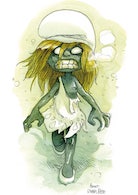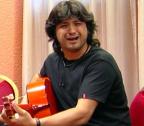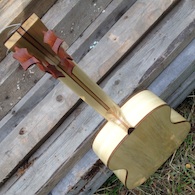Welcome to one of the most active flamenco sites on the Internet. Guests can read most posts but if you want to participate click here to register.
This site is dedicated to the memory of Paco de Lucía, Ron Mitchell, Guy Williams, Linda Elvira, Philip John Lee, Craig Eros, Ben Woods, David Serva and Tom Blackshear who went ahead of us.
We receive 12,200 visitors a month from 200 countries and 1.7 million page impressions a year. To advertise on this site please contact us.
|

|
|
what chords follow each other in flamenco ?
|
You are logged in as Guest
|
|
Users viewing this topic: none
|
|
Login  | |
|

   
joevidetto
Posts: 191
Joined: Jun. 15 2013

|
 what chords follow each other in fla... what chords follow each other in fla...
|
|
|
Hi all,
I'm looking to put together a comprehensive list of what chords follow each other in flamenco, and for the sake of being concrete, start with a particular key - por medio. I'm going to call these 'progressions' (don't want to get into a terminology discussion lol) but realize they can also be called lots of other things.
I find one thing lacking in my practice reportoire is playing through and hearing these progressions, and also having a large library with variations to practice.
I realize that practice should be done in compas, and/or with a particular cante melody in mind, and that voicings are very, very important - so not only are the chord notes critical, but variations in voicings should be part of this list. For me, information like this is much better done with chord diagrams than music notation in terms of committing to memory and getting under my fingers.
Can anyone share any links, websites, or other materials that have an organized list of progressions ? Also - rules on how to modify the basic progressions and stay within the idiom ? Now that's a whole OTHER discussion that IMHO belongs as part of this list and practice routine. For example, most common is Andalusian cadence, and preceding each chord with secondary dominants. Extending any chord diatonically or with color tones...etc - again - asking that we refrain from semantics and theory on this post. Use whatever system you use.
Given some of the last discussion on Flamenco keys, it will be interesting to see how others notate these progressions.
Thanks in advance,
Joe
|
|
|
|
REPORT THIS POST AS INAPPROPRIATE |
Date Jan. 27 2021 13:26:29
 |
|

   
Ricardo
Posts: 14799
Joined: Dec. 14 2004
From: Washington DC

|
 RE: what chords follow each other in... (in reply to joevidetto) RE: what chords follow each other in... (in reply to joevidetto)
|
|
|
quote:
Of the 210 Beatles songs, no less than 194 are in major keys. 165 of these are in the keys of E major (38 songs), G major (38), A major (36), D major (28) and C major (25). Of the remaining 29 songs, 10 are in F major, 6 in B, 4 in Bb, 4 in Eb, 2 in Ab, 2 in Gb; there is one song in Db. Although songs may have been transposed for different reasons—the famous splicing together of “Strawberry Fields Forever” from two takes in different keys being one example—this shows the dominance of the “guitar keys” of C, G, D, A and E major (cf. section 7).
[5] The I, IV, V, vi and ii Chords
The harmonic language of the Beatles mainly uses the chords I, IV and V (in C major: C, F and G major) and the relative minors vi and ii (A minor and D minor). Table 1 shows the frequencies of chords in songs in major, transposed to the key of C.
The chords mentioned above can be combined virtually any way at all, provided that the I chord can be discerned as the tonic or “home” chord. In the key of C major, all the chords F, G, Am and Dm can have the penultimate position in cadence-like contexts or in entire songs. The IV and V chords are used more frequently than the vi and ii chords in this way, but these relative minors are by no means uncommon.
If that makes sense to you in a functional way, replace “Beatles” with “Flamenco” and major key with “flamenco phrygian key” and the E major with “por Arriba”, por medio for A major, C F D major are pretty close thanks to fandangos, and the flat keys are rare until the modern music comes in to the picture, but even still rare. The relative numbers and percentages of the “guitar keys” are reflective of the nature of the guitar tuning, whether it’s Beatles or flamenco. G major is the odd ball only used in Granaina key and Garrotin, however, E minor is used for Rumba and Alegrias just as much. The I IV V is the basis of Fandangos and constitutes an ENORMOUS body of flamenco songs.
The “general rules” are not really different for flamenco than basic tonal harmony practices post baroque/classical. Cadence is the main thing. Basically chords move or progress by 5th except when you don’t want them to. After that any chords or notes follow any others to taste. Using rhythm, even chromatic chords can be used so long as the cadence is obeyed. Rhythm let’s the composer get away with a lot of crazy stuff ...hence the over emphasis on students learning “compas” at early stages. When one understands “cadence and compas” then you could used Shoenberg or Stravinsky passages to great flamenco effect if desired. The other day I was messing with some Wagner 
_____________________________
CD's and transcriptions available here:
www.ricardomarlow.com
|
|
|
|
REPORT THIS POST AS INAPPROPRIATE |
Date Jan. 28 2021 18:59:47
 |
|
 New Messages New Messages |
 No New Messages No New Messages |
 Hot Topic w/ New Messages Hot Topic w/ New Messages |
 Hot Topic w/o New Messages Hot Topic w/o New Messages |
 Locked w/ New Messages Locked w/ New Messages |
 Locked w/o New Messages Locked w/o New Messages |
|
 Post New Thread
Post New Thread
 Reply to Message
Reply to Message
 Post New Poll
Post New Poll
 Submit Vote
Submit Vote
 Delete My Own Post
Delete My Own Post
 Delete My Own Thread
Delete My Own Thread
 Rate Posts
Rate Posts
|
|
|
Forum Software powered by ASP Playground Advanced Edition 2.0.5
Copyright © 2000 - 2003 ASPPlayground.NET |
0.046875 secs.
|


 Printable Version
Printable Version






 But I don’t want to sound too jazzy
But I don’t want to sound too jazzy




 New Messages
New Messages No New Messages
No New Messages Hot Topic w/ New Messages
Hot Topic w/ New Messages Hot Topic w/o New Messages
Hot Topic w/o New Messages Locked w/ New Messages
Locked w/ New Messages Locked w/o New Messages
Locked w/o New Messages Post New Thread
Post New Thread